Could this gaming app change the way we shop?
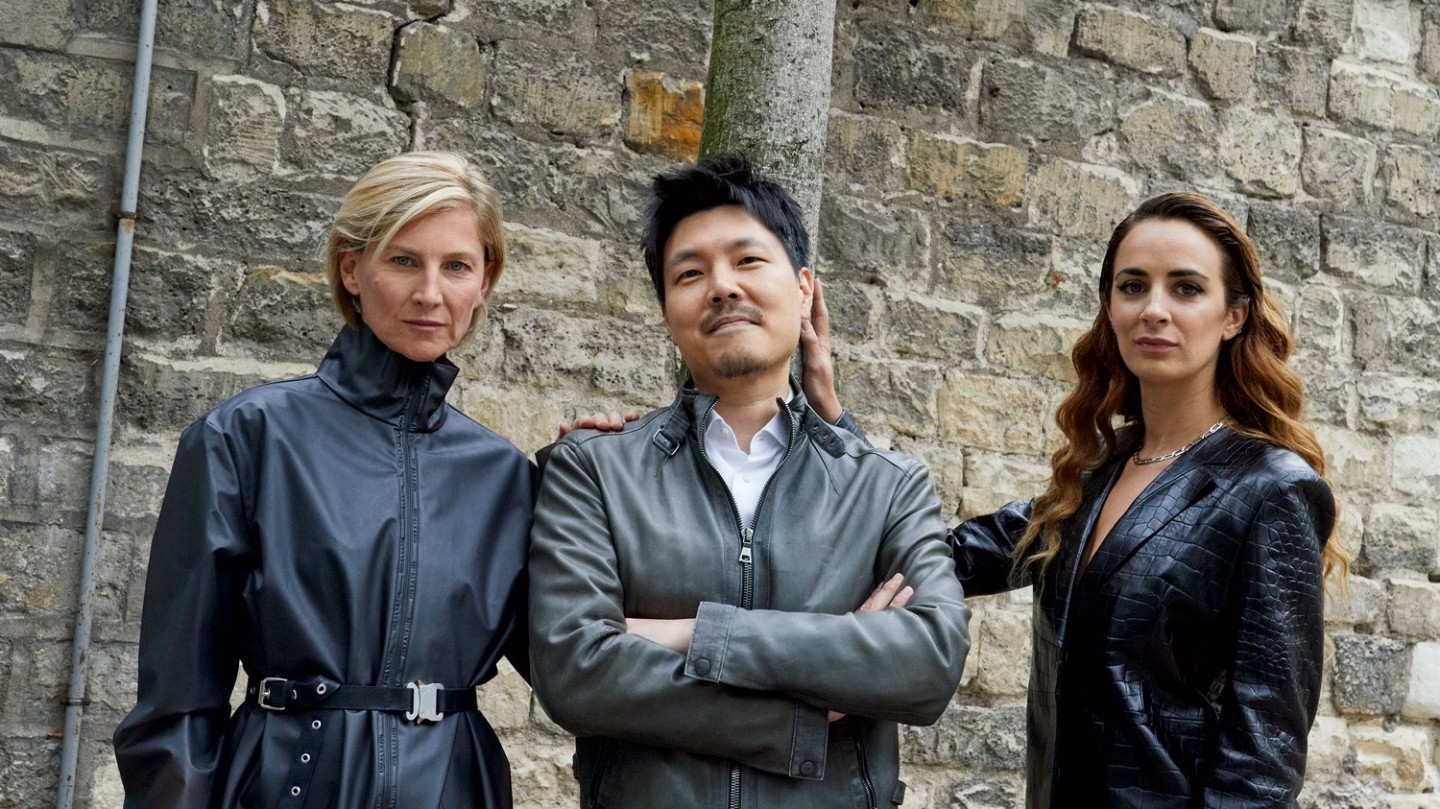
Simply sign up to the Fashion myFT Digest -- delivered directly to your inbox.
“All that is solid melts into air,” wrote Karl Marx in The Communist Manifesto. It is not the most obvious jumping-off point for a discussion of fashion, but it’s the right one when it comes to Ada, a new app that its inventors hope will revolutionise the way young people consume luxury. Marx’s dictum was prescient in all sorts of ways. Our economies have become ever more abstract. Markets in information and influence are outstripping markets in goods and services. We sell the sizzle, not the sausage.
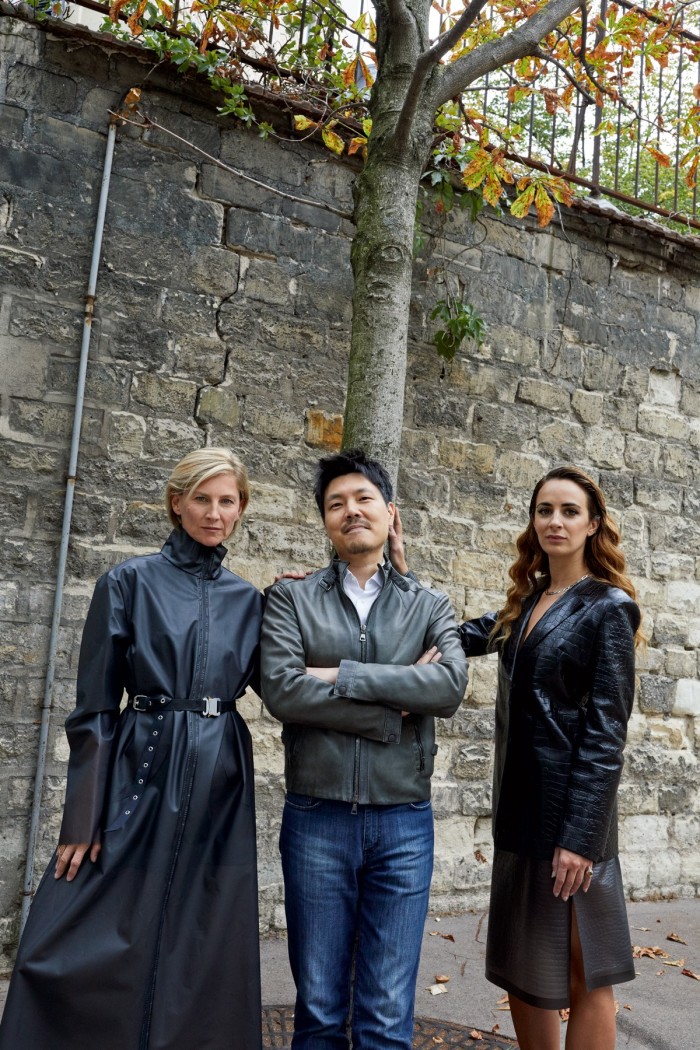
The rag trade has never been immune to this. The thing that makes your trainers cost £150 isn’t the cost of raw materials, manufacturing, shipping or warehousing: it’s the logo stitched on to the back. But what if you could go one step further: what if you could detach the idea of a designer object entirely from the object itself? That’s what – among other things – Ada hopes to do.
Ada is a smartphone app created by an unlikely alliance of two fashion-world insiders and a Korean video-game guy, powered by Chinese business muscle and glammed up with the participation of the most prestigious western fashion houses. What is it? It’s a dress-up dolly for the social-media age.
In this, as in so much, the 1995 film Clueless – which the founders reference in discussing it – showed the way. There’s a scene in the film where, before going to school, Alicia Silverstone plans her look by firing up her PC and playing mix-and-match with a virtual wardrobe. When she’s chosen her top and skirt, the computer superimposes them on a virtual mannequin with her face to show how they’ll look. And off she goes to her real wardrobe.
The idea has been around since before that, of course – with Victorian children painstakingly attaching paper dresses to cut‑out dolls with folding flaps. But in this iteration, its creators hope, it’ll be more than just a diversion. It could hold the key to opening up high-end fashion, through micropayments and online play, to markets that the big brands have hitherto struggled to reach: western teenagers, Chinese non-oligarchs, female gamers – and anyone who likes fancy clothes but doesn’t have the budget or chutzpah to shop on Bond Street.
I meet Ada’s creators in an immaculately bobo apartment in Paris’s 7th arrondissement. But the story doesn’t begin anywhere near the fashion industry as such. It didn’t hatch in the wonderland of a runway show or the branding department of a giant European luxury goods firm. It centres, now, on Elizabeth von Guttman and Alexia Niedzielski, the two well-groomed women who are the western face of the game, but it began with their colleague Andy Ku, a gentle, goateed man with undergraduate and masters degrees in architecture and urban planning from US universities.
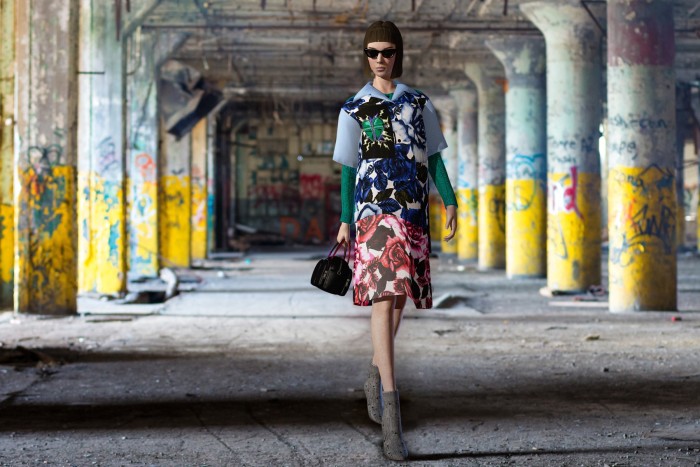
“I’m a game guy,” says Ku. “I have no experience in fashion.” From early in the millennium, Ku had been focusing his career on the potential of online games: “I knew it was going to be the next big thing.” His first company, set up in 2007, half funded by Silicon Valley and half by investors in China, built customisable avatars and soon turned into a predecessor of Ada. “It started as a kind of virtual dress-up, with social-based gameplay. We allowed people to visit each other’s virtual rooms and engage with real-time chatting.” The virtual outfits they were selling were envisaged by their in-house design team, and “looked kind of horrible; I see that today.” But here’s the thing that really clicked: it didn’t matter. “People were buying, on average, $83 worth of virtual goods a month. With the top spenders it was $10,000.”
What would happen, Ku wondered, if their clients could dress their avatars in imaginary clothes from real brands? It was 2012. Ku was confident that the $83 spend would go to $120. “I tried for almost a year and a half to get some introduction to the fashion brands, but failed.” There’s something rather touching about the picture of Ku knocking forlornly on the doors of the big fashion houses talking about 3D avatars and virtual spaces and getting the bum’s rush. As he puts it, “Even if I’d had the right contacts then, I don’t think the brands were ready.”
And yet it seems a perfectly obvious synergy. Fashion, over the years, has found synergies with almost every high-profile and/or cash-rich part of the economy. And in the video-game world – especially the mobile-gaming world – cash is very, very plentiful. Mobile gaming is expected to be worth nearly $70bn in 2019 and accounted for 75 per cent of mobile revenue in the first two quarters. What’s more, the mobile sector gives the lie to the idea that video games are a pastime restricted to adolescent boys: it’s estimated that half of mobile-games users are now women.
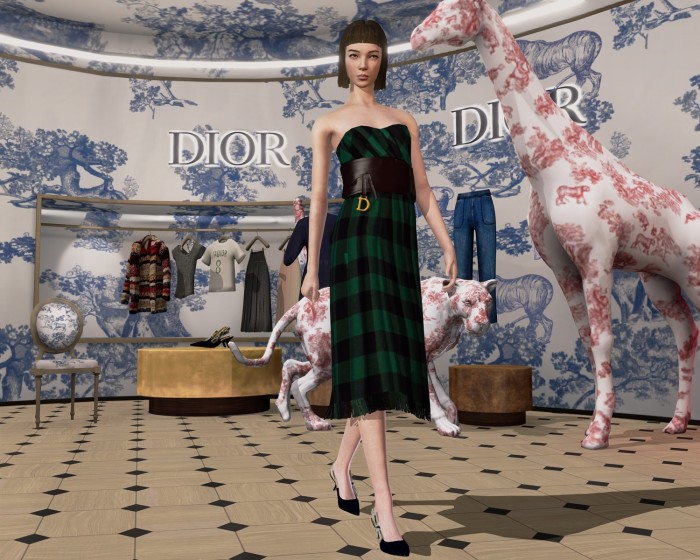
Yet high fashion’s relationship with the digital world was slow to start and hedged with difficulty. Selling frocks online has obvious advantages – less retail floor space, fewer human assistants to employ, vast brand reach on the cheap and so on. But it also has huge problems. Real frocks are physical things and sooner or later the rubber meets the road (or the bodice meets the body). Each brand sizes things slightly differently. You can’t try on a dress online to see how it drapes and whether the zips pinch. You can’t layer several pieces to try out a look before you buy. You can’t feel a fabric between finger and thumb or test it in natural light. That means a lot of time, inconvenience, logistics, postage and packaging spent on returns.
And there’s good old-fashioned snobbery, of course. What fashion brands are doing doesn’t always seem to be compatible with the default democracy of digital spaces. At the top end of the market, exclusivity is part of the cachet. The other problem for big brands is that, through secondary ecommerce sites, they find themselves dragged online willy-nilly. And they have still struggled to reach younger generations through their traditional channels.
That’s where Niedzielski and von Guttman came in. The pair are serious fashion-world insiders who’ve been working together since they met through friends more than a decade ago. They founded a magazine called Ever Manifesto, which “started a conversation about fashion and sustainability in 2008 – we were a bit ahead of the trend” – and lasted three issues before they moved on. They currently publish a biannual fashion magazine the size of a telephone directory called System, aimed at the insider fashion crowd. It’s been described as “FUBU: for us, by us”. And their connections have landed them scoops – most notably the first interview with Nicolas Ghesquière after he parted ways with Balenciaga, which caused a great brouhaha, with Balenciaga suing the designer but not, fortunately, the magazine.
But they’d been looking for the next big thing, they thought it would likely be digital, and in Ku’s idea they thought they’d found it. “We met Andy in New York and he is the one who told us about the massive importance of the gaming world. He immediately talked to us about his idea and it was in perfect harmony with what we wanted. We thought, ‘We’re just going to jump a phase and go virtual’.” He had the video-game knowhow and no fashion contacts; they had fashion contacts to burn and no deep understanding of the video-game market, but a strong awareness of its importance.
Niedzielski is a bit of a PlayStation widow: “My boyfriend plays every single console game that comes out. That’s all he needs in life.” Von Guttman, who has young children, is exposed at second hand too: “I’m not too ‘for’ video games at a young age, but sometimes you end up doing things you’re not supposed to do. I’m downloading some of these games and it is just so easy and addictive to keep topping up, keep going to the next stage. And you end up spending money that you had no idea you were spending.” Which obviously sounds like a bad business model to a parent, but a brilliant one to an entrepreneur.
Hence, Ada – named after that 19th-century fashion plate and pioneering theorist of computer science Ada Lovelace. The app is what von Guttman calls “a new fashion hub” for “a curated selection of brands. Instead of going to a website for your content, or to social media, or maybe ecommerce, it regroups those three activities.” And the brands have been happy to play: already Dior, Gucci, Prada, Armani, Balmain, Miu Miu, Christopher Kane, Mary Katrantzou and many others are signed up. Among the things that persuaded them, says Niedzielski, was showing them that clip from Clueless. “Obviously, this was any girl of my generation’s biggest fantasy!”
The basic proposition with Ada is this. You log on to the app and, once you pass the homepage, where “you’ll learn about the latest brands and what they’re doing”, you get to the fun stuff. You’re presented with a little 3D avatar of yourself. It’s in a room somewhere like New York, though you can’t go out on to the street. Ku showed me his avatar in the sort of bare-brick NoHo loft that was cool in the mid-1990s. Your room contains a bunch of furniture and other decorative features that you can customise as you advance – splash out and buy an imaginary Eames chair, say. And your wardrobe contains all the virtual goodies that you’ve bought – in which you can virtually peacock around to impress your friends.
The clothes you can buy in the game are, they say, meticulous digital recreations of pieces from the latest collections. The developers create the digital image from the three views of each garment you’d see on an ecommerce website, and then the software engineers make best-guess decisions about the physics of how each fabric would behave. For most users, the digital garment will be the thing – but it will also be possible to click through to buy the real-world equivalent.
Niedzielski says the rendering of the fabrics and styles was a vital part of getting the fashion houses on board. “It’s unbelievable – all these materials that are tricky to digitise. Leather, shine, glitter, etc…” Von Guttman chimes in: “That’s why these brands haven’t been on any kind of platforms like this. I think this is the first time they’ve seen anything of this quality. We’ve had a lot of feedback from the brands saying, ‘Oh my God – finally you’ve been able to translate luxury online.’”
To my eye, these avatars looked more like a decent next iteration of Second Life than a dazzlingly photorealistic simulation or a Juergen Teller shoot come to life. But if it’s to run on even a latest-generation smartphone, there are only so many polygons it can sling before the phone falls off its barstool and has to be sent home in a cab. It kinda works: the hems of the dresses ripple a bit; sheer and shiny fabrics catch the light. And you can layer to your heart’s content, tuck things in or let them hang out – and, at least in theory, do anything you’d do in the real world to create your virtual look.
The idea is that these collections will be released in the game like they’re released in the real world – and if that Prada jacket is in a run of only 500 in meatspace, there’ll only be 500 in the game world. Getting a rare piece will give you bragging rights, then, and possibly even earn you money. There are plans in place for a secondary market also, where players will be able to hire your kit. They’ll be credited a few dollars in the game’s virtual currency, and you’ll still be able to wear your hat because your unknown client can only hire a copy of it.
The whole thing is gamified too. Not only do you get to buy things with virtual currencies (a dollar outside will buy you $1,000 in-game; like the China of the good old days, they exert strict control over foreign exchange), but the more you engage with the game and the more time you spend in it, the more you level up. You’ll end up with a fancy penthouse suite, early access to exclusives and that sort of thing. And you’ll be able to enter competitions – create the snazziest look using the new Christian Dior collection, say – to win advancement or virtual cash. They’re even hoping, they say, that you could use location data, so that the winners of virtual competitions might be rewarded with VIP tickets to real-world fashion events in their local cities. “We can bridge the virtual world to the physical world,” says von Guttman.
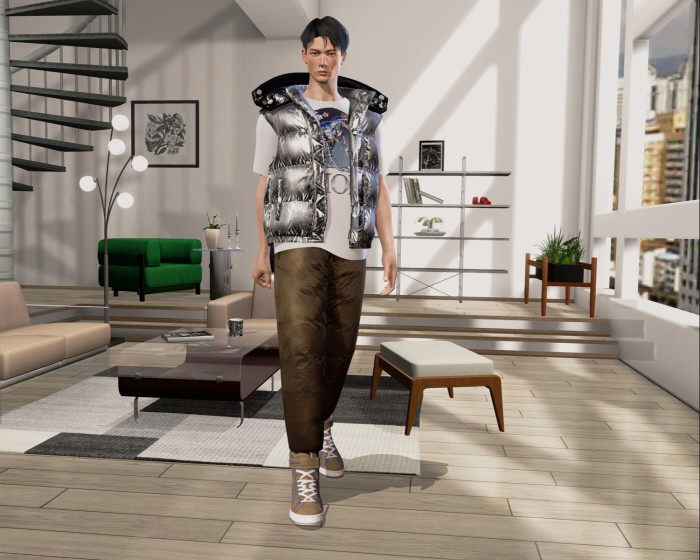
But apart from going shopping for virtual goods and trying on looks, what else can you actually do? What keeps you clicking once you’ve, y’know, got dressed? Obviously, you can’t drive cars around or shoot aliens, worse luck. Or explore a virtual world, go dancing, collect dilithium crystals or make sweet digital love. You can go browse in one of the pop-up boutiques that fashion labels will pay to maintain. You can take virtual selfies and put them on your social media. And you can teleport to other people’s rooms and chat or, if they’re out, leave them presents.
“The fashion is the entertainment,” says Niedzielski firmly. Plus – which is perhaps the cutest aspect of the game – you can style virtual celebrities. Under the menu in Ku’s phone are a number of Chinese influencers (KOLs, or Key Opinion Leaders, they’re known as) and one I recognised.
“You can buy Alexa Chung!” I exclaim happily. “Isn’t that unethical?”
“You’re not buying Alexa,” von Guttman says a little peevishly. “You’re engaging with her. Instead of dressing your avatar, you create an outfit for Alexa.” The way it works is that you can access their avatar (with the featured celebrity taking a rake, obviously), dress them up in whichever collection they’re fronting, and then take a virtual selfie with your newly hired virtual friend.
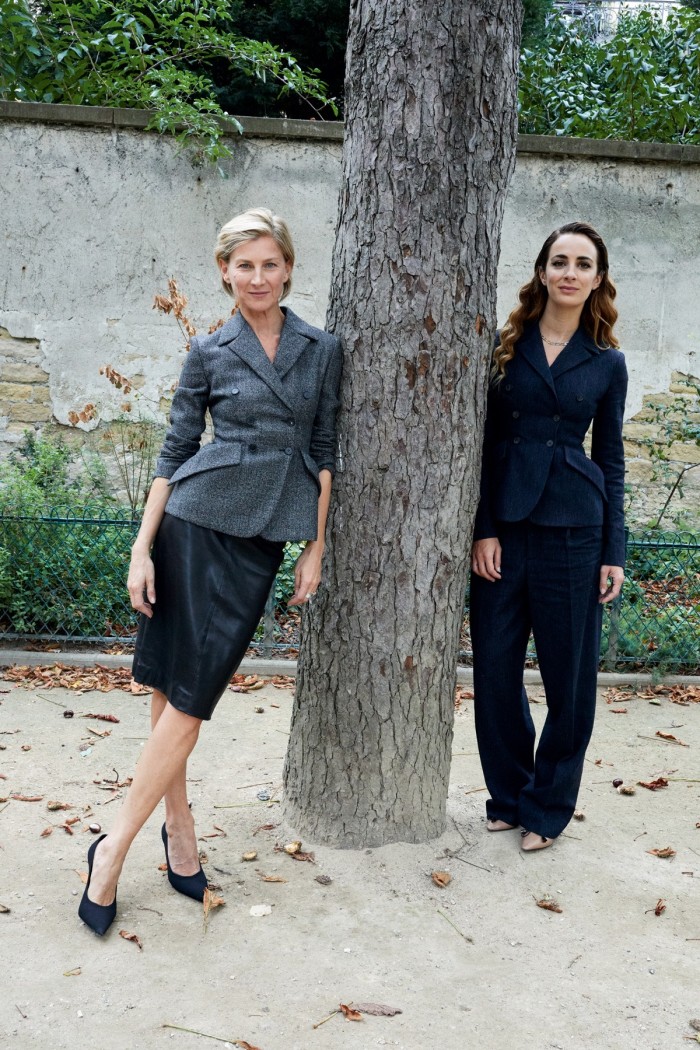
The possibility that you can click through to buy the real thing online – correctly sized, once you’ve got your avatar tailored to your precise body shape – is one revenue stream, but not the main one. They say that they’re anticipating 70 per cent of the revenue, to start with, coming from the virtual clothes. And there’s gold in them there hills: virtual economies with real-world exchange rates are so well established in other areas of the gaming world as to have prompted concerns about tax compliance and money laundering. “Gold farmers” in the developing world gather and resell virtual goods – magic swords, World of Warcraft gold pieces – for real money as a full-time job.
Ada’s ostensible rivals and forerunners include virtual dress-up games-cum-e-commerce platforms like LoveLooks, Covet Fashion, Style.me, Style Challenge and Drest (a similar venture by the former magazine editor Lucy Yeomans). Not to mention the extraordinarily successful Kim Kardashian: Hollywood.
Drest apart, rival games don’t have the co-operation of the same range of real-world brands. But what really makes Ada different is the access it will have to the Chinese market, as they are working with the vast Chinese media conglomerate Sina, which dominates mobile computing in the People’s Republic and owns Weibo, the Chinese version of Twitter. That’s the real biggie. Ada launched in China on October 18 (18 is numerologically auspicious in Chinese culture) and will be available in the west early next year. As von Guttman says, “By 2025, 44 per cent of the luxury consumer market will be Chinese. And still their main focus is the desirability of western luxury brands.”
Ku’s pitch to the big fashion brands with regard to China was a straightforward one. “I asked them, ‘What’s easier?’” he says. “‘To find one person who can afford to spend $1,000 on one Valentino shirt? Or to find 1,000 people who are willing to pay $1 to buy a virtual Valentino shirt?’ We are really opening up a completely new revenue stream for brands. With this model, anyone walking down the street is a potential customer.”
So for many of the brands, this is a way of getting a lot of a little rather than none of a lot, as well as being a way of extending brand awareness to generations and demographics that Vogue cannot reach. “It’s another branding exercise for them to get in touch with customers they have a hard time interacting with, which is Gen Z and millennials,” says von Guttman. “This generation is not as faithful to brands as we are. It shows them how they can play with brands – rather than going to the shops, which isn’t always such a welcoming experience.” For those of us who wear clothes, but for whom the only interesting question about a clothes shop is whether it has somewhere to sit down, this sounds a selling proposition. Game on!
Comments